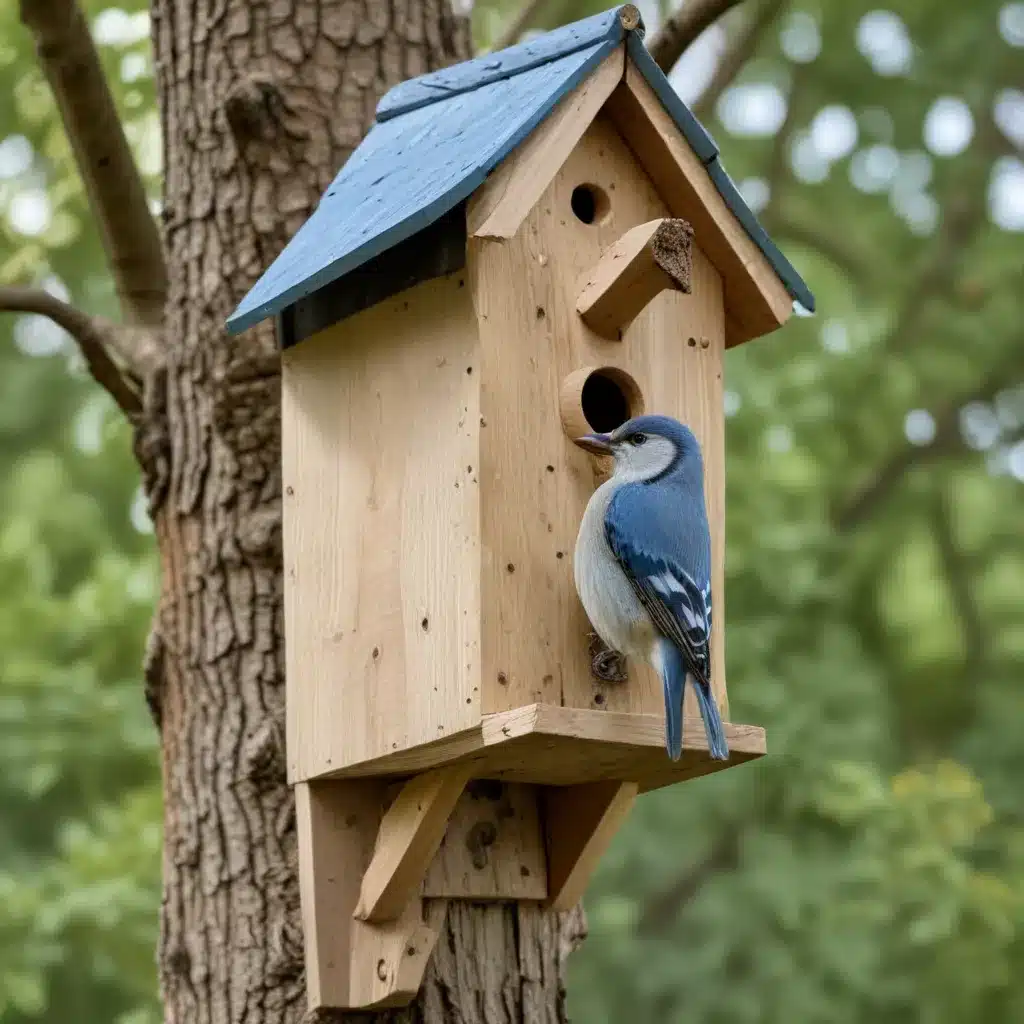
As an experienced avian caretaker and expert in all things birds, I’ve seen it all when it comes to backyard bird habitats. From improperly placed nest boxes to hazardous nesting materials, there are a multitude of potential pitfalls that can impact the health and safety of our feathered friends. But fear not – with the right know-how, you can create a thriving oasis for birds in your own backyard.
Bird Habitats and Challenges
Common Bird House Problems
One of the most common issues I encounter is the placement of birdhouses. Many homeowners simply tack up a box without considering the ideal location. Proper positioning is crucial – birdhouses should be mounted 5-10 feet off the ground, facing away from prevailing winds and direct sunlight. Placing them too low makes them vulnerable to predators, while improper orientation can lead to overheating or poor ventilation.
Ventilation is another key factor that is often overlooked. Stagnant air in a birdhouse can create a breeding ground for parasites and lead to nestling mortality. The best houses have multiple ventilation holes or slots near the top to allow for airflow. Covering these openings in winter can provide much-needed insulation, but they must be reopened in spring.
Predator access is perhaps the biggest threat to nesting birds. Cats, raccoons, snakes, and even larger birds like hawks can wreak havoc on a vulnerable nest. Baffles, cones, and other deterrents should be installed on the mounting pole to prevent climb-ups. Careful placement away from dense cover and low-hanging branches is also important.
Nesting Material Considerations
Providing the right nesting materials is another crucial aspect of creating safe bird habitats. While birds may naturally incorporate all sorts of found objects into their nests, some common household items can actually be quite hazardous. Dryer lint, for example, may seem like a cozy lining, but it can actually stick to nestlings’ delicate skin and feathers.
Conversely, natural, biodegradable materials like grass, moss, and plant fibers make excellent nesting substrates. Offering a selection of these in a mesh bag or platform feeder can give birds the building blocks they need while keeping them away from potentially harmful household refuse. Avoiding any materials treated with chemicals is also highly recommended.
Backyard Bird Species
Songbirds
Songbirds like sparrows, finches, and warblers are some of the most beloved backyard visitors. However, their small size and ground-feeding habits make them particularly vulnerable to threats. Sparrows, in particular, face intense competition from invasive house sparrows that will aggressively displace them from nesting sites.
Finches, on the other hand, tend to be more solitary and less prone to conflicts. Their affinity for seed-bearing plants makes them excellent indicators of a healthy, diverse habitat. Warblers, with their vibrant plumage and delicate insect-foraging behaviors, are a true delight to observe but can be sensitive to environmental changes.
Cavity Nesters
Woodpeckers, nuthatches, and chickadees are all cavity-nesting species that rely on natural or man-made holes for their homes. Providing properly sized and situated birdhouses can be a huge boon for these charismatic birds. Cavity nesters are particularly vulnerable to competition from invasive species like European starlings, which will aggressively usurp nesting sites.
Maintaining healthy stands of mature trees is crucial for these species, as they often excavate their own cavities or seek out naturally occurring ones. Supplementing with well-placed, predator-resistant nest boxes can help offset the loss of suitable natural nesting sites.
Enhancing Bird Habitat
Native Plant Selection
One of the best ways to support a thriving backyard bird community is to incorporate native plants into your landscaping. These species have coevolved with local bird populations, providing essential food sources in the form of berries, nectar, and insects.
Fruiting shrubs like dogwoods, serviceberries, and chokeberries offer a nutritious bounty for migrating songbirds as well as year-round residents. Nectar-rich flowers like bee balm, cardinal flower, and scarlet sage attract hummingbirds and attract a diversity of pollinators.
By choosing plants native to your region, you’re not only creating an oasis for birds, but also supporting the overall ecological balance of your local environment. Consult with a local nursery or conservation organization to determine the best species for your area.
Water Sources
In addition to food, birds have a vital need for clean, reliable water sources. Birdbaths, small ponds, or shallow pools provide drinking and bathing opportunities that can be a literal lifesaver, especially during periods of drought or extreme temperatures.
Positioning water features in open, accessible areas away from dense cover can help reduce the risk of predation. Keeping baths clean and refreshed regularly is also crucial, as stagnant water can breed parasites and bacteria. Adding a dripper or mister can further entice birds to visit and enjoy a soothing splash.
Protecting Birds from Threats
Predator Management
Outdoor cats are one of the biggest threats to backyard birds, responsible for the deaths of billions of individuals each year. Keeping cats indoors, or restricting their access to bird-friendly areas, is an essential step in safeguarding your feathered neighbors.
Larger predators like raccoons, opossums, and snakes can also pose a serious risk to nests and fledglings. Ensuring that birdhouses and feeders are mounted on predator-resistant poles, with proper baffles and guards, can help deter these unwanted visitors.
Hazard Mitigation
Window collisions are another major cause of bird mortality, as our glass-heavy homes and buildings can be deadly obstacles. Applying decals, placing feeders within 3 feet of windows, or using netting can all help reduce the risk of these tragic accidents.
Pesticide exposure is another concern, as many common lawn and garden chemicals can be toxic to birds. Opting for organic, bird-friendly alternatives or adopting integrated pest management strategies can help create a safer environment.
By addressing these common issues and enhancing the overall habitat in your backyard, you can help create a thriving, bird-friendly oasis. Remember, even small steps can make a big difference in supporting our feathered friends. For more information and resources, be sure to check out Mika Birds Farm – your one-stop shop for all things avian.


